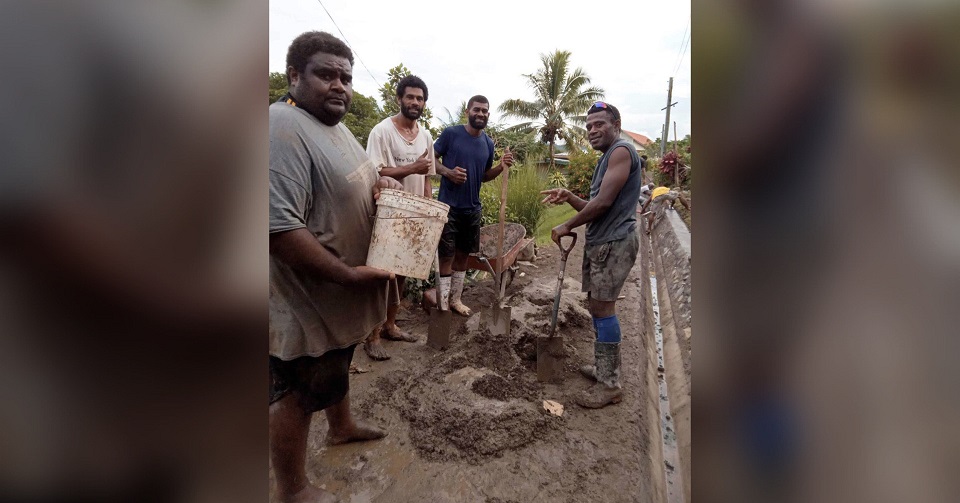The work of youths of Nanukuloa Village, Ra, to construct concrete drains in the village to mitigate flooding is encouraging.
It is the way to go.
The project is part of a Disaster Risk Reduction project after the youths secured $12,000 in climate resilience funding.
For many years, the group said, the villagers faced prolonged flooding from intense heavy rains and cyclones.
It meant villagers had to clean their homes after every disaster and they had little support to mitigate the issue.
It was good to note the effort put into doing something now.
Their initiative highlights the need for a comprehensive strategy that combines community action with government intervention.
Let’s face it, Ra’s struggle with floods is long-standing, with heavy rains and cyclones causing prolonged inundation for years.
The villagers’ experience underlines the need for long-term solutions beyond post-disaster cleanup.
We have had decades to address this issue.
The question now is whether we have the will to do something to address the concerns of the people of Ra? Natural disasters have not just popped out of the woodworks so to speak. We have an annual cyclone season that stretches from November to April.
We have rainy seasons that flood a few places like Labasa on Vanua Levu, Sigatoka, Nadi, Ba, Tavua and Rakiraki on Viti Levu, almost every year.
We also learn that somewhere in the Ministry of Waterways sits a report from 2019 that made recommendations on how to minimise flooding in Rakiraki for instance.
It was done by a team from the Netherlands and titled “Dutch Disaster Risk Reduction (DRR) Mission Report Fiji: Scoping Mission for Flood Alleviation Measures for Ba & Rakiraki Towns”.
As our report on Page 5 today suggests, perhaps the content of this report should be re-visited by the Coalition Government to see what can be done to combat flooding in Ra.
We may need a multi-phased strategy for Ra.
In the face of that, budgetary constraints, local government capacity, and community awareness may influence the implementation timeline.
In saying that though, the Nanukuloa Village initiative reflects the importance of community-driven solutions.
It is important for communities to take ownership of major challenges that directly impact them and be part of the solution.
However, to effectively fight Rakiraki’s flooding woes, we need a multi-pronged approach.
This should include implementing the recommendations of the DRR report, encouraging community engagement, and considering long-term infrastructure projects alongside immediate measures like drainage improvements.
By combining local efforts with government initiatives and strategic planning, we know Rakiraki can become a more flood-resilient town.



